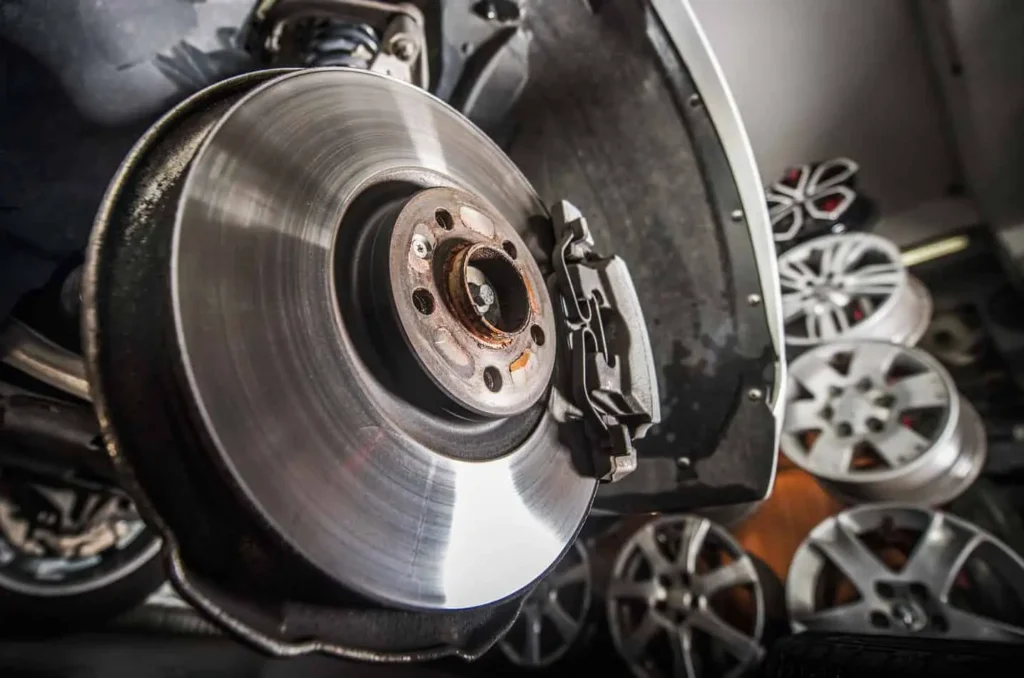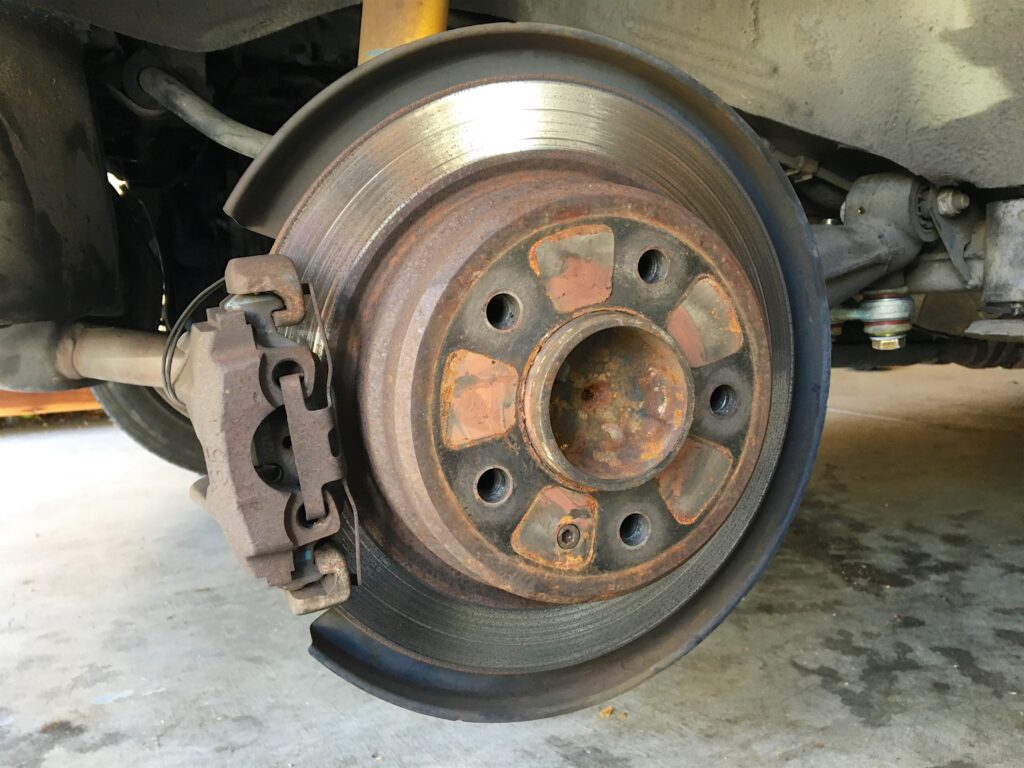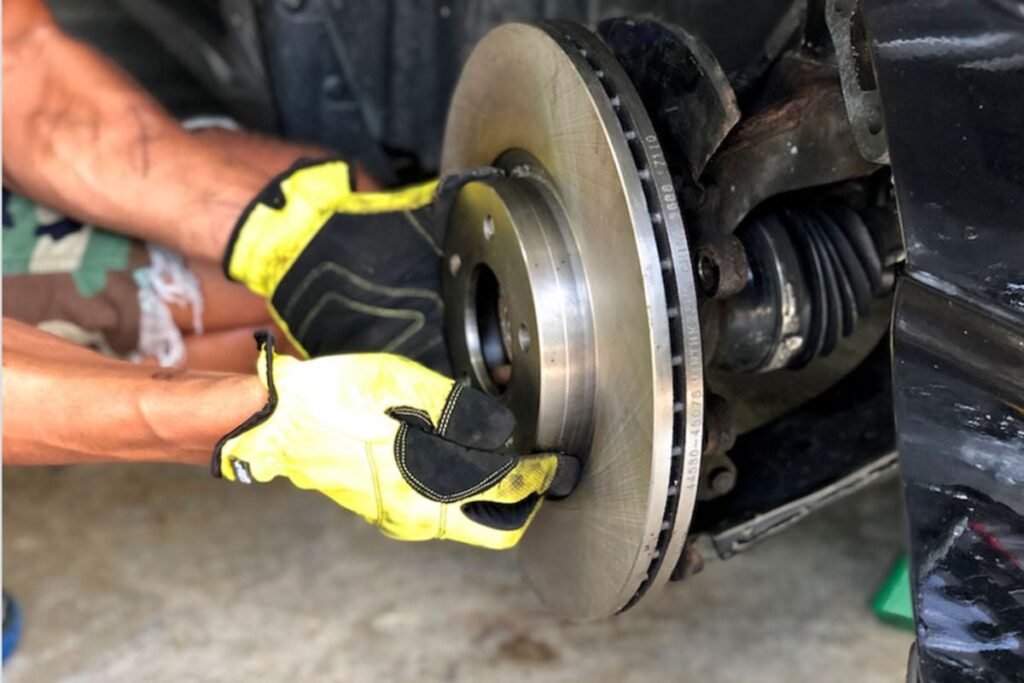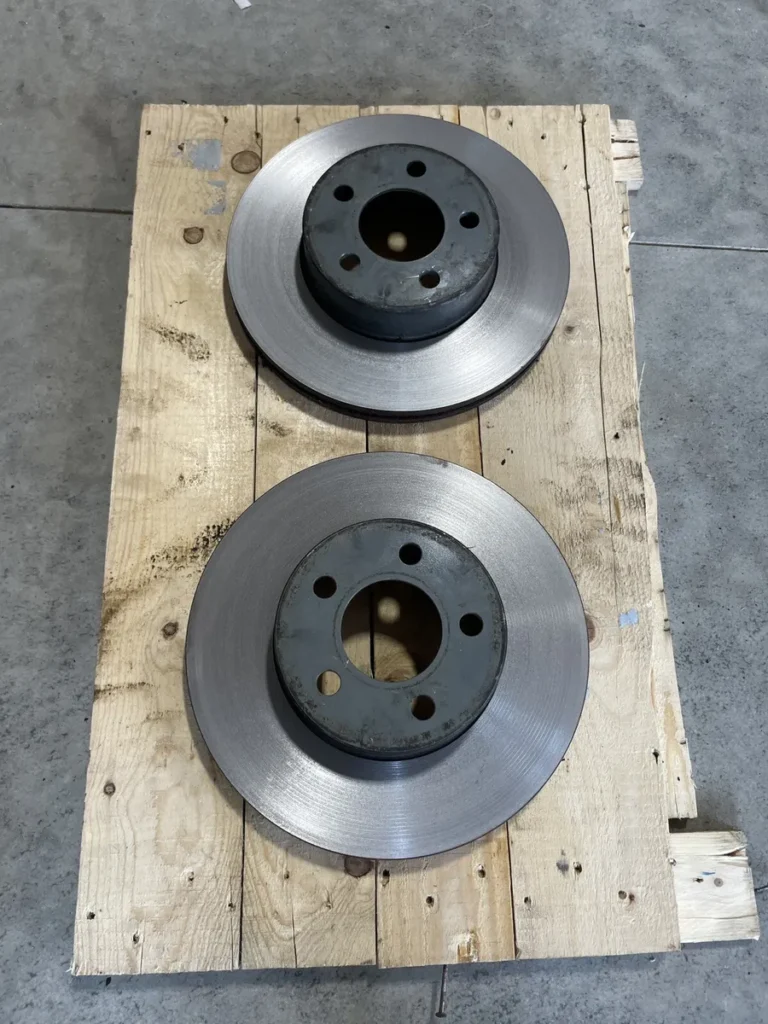Yes, brake discs are commonly sold in pairs, with two discs for the front axle and two for the rear axle, aligning with the standard configuration of most vehicles. This packaging practice simplifies replacement for the typical setup.
However, it’s also possible to purchase individual brake discs if only one needs replacement due to wear or damage. The decision often depends on factors such as the vehicle’s design, maintenance needs, and personal preferences.
Whether in pairs or individually, replacing brake discs is vital for maintaining balanced braking performance and ensuring the safety and efficiency of the braking system.
What Is The Purpose of Brake Discs?

Brake discs, also known as brake rotors, play a crucial role in the braking system of a vehicle. When you press the brake pedal, the brake calipers squeeze against the brake discs, creating friction.
This friction is what slows down and eventually stops the rotation of the wheels. The kinetic energy from the moving vehicle is converted into heat through this process, and the brake discs are designed to handle and dissipate this heat effectively.
Brake discs are typically made of high-strength materials, such as cast iron or composite materials, to withstand the intense heat generated during braking.
They are an integral part of the overall braking system, working in conjunction with brake pads and calipers to ensure a reliable and efficient braking performance.
Different Types of Brake Discs (Vented, Slotted, Drilled)
Vented Brake Discs
Vented brake discs feature channels or vanes between the two friction surfaces. This design enhances heat dissipation by allowing air to flow through the disc.
Commonly found in performance and heavy-duty vehicles, vented discs prevent overheating during prolonged or intense braking, maintaining optimal performance.
Slotted Brake Discs
Slotted discs have machined slots or grooves on the disc surface. These slots serve multiple purposes, including expelling heat, water, and brake dust.
The slots help maintain a clean contact surface for the brake pads, reducing the risk of glazing. This design improves overall braking efficiency, particularly in challenging driving conditions.
Drilled Brake Discs
Drilled brake discs have holes drilled into the disc surface, providing additional heat dissipation and reducing overall weight.
Popular in sports cars and performance vehicles, drilled discs offer improved cooling and can enhance the visual appeal of the braking system.
Choosing the right type of brake disc depends on various factors, including the vehicle’s intended use, driving conditions, and the driver’s preferences. It’s essential to consider the trade-offs between different types, such as heat dissipation, weight, and aesthetics.
Importance of Proper Maintenance for Brake Discs
Proper maintenance is crucial for preserving the functionality and longevity of brake discs. Here’s a more in-depth look at key maintenance practices
Regular Inspection
Perform visual inspections of the brake discs to check for signs of wear, scoring, cracks, or uneven surfaces.
Measure the thickness of the brake discs and compare it to the manufacturer’s specifications. Replace discs that fall below the recommended minimum thickness.
Brake Pad Inspection
Monitor the condition of brake pads for wear and tear. Worn-out pads can damage the brake discs and compromise braking efficiency.
Replace brake pads in a timely manner and consider replacing both pads and discs simultaneously for optimal performance.
Cleaning and Lubrication
Regularly clean brake discs to remove accumulated brake dust, debris, and contaminants. This helps prevent noise, vibration, and uneven wear.
Lubricate caliper sliders and other moving parts to ensure smooth and even braking force distribution.
Brake Fluid Checks
Check brake fluid levels regularly and top up as needed. Maintaining proper fluid levels is essential for consistent braking performance.
Follow the manufacturer’s recommendations for brake fluid replacement intervals to prevent fluid degradation and potential brake system issues.
Do Brake Discs Come in Pairs?

The common question of whether brake discs are sold in pairs often arises among vehicle owners and enthusiasts. The straightforward answer is that brake discs can be purchased both individually and in pairs, depending on various factors. It’s important to understand the rationale behind this and the considerations that influence the purchasing decision.
Why or Why Not Brake Discs Are Sold in Pairs
Vehicle Design and Configuration
In many cases, vehicles are equipped with a set of two brake discs on the front axle and another set on the rear axle. As a result, when brake discs are sold, they are often packaged in pairs to accommodate the standard configuration of most vehicles.
Uneven Wear and Replacement
Brake discs, like brake pads, can experience uneven wear over time. In some instances, one disc may wear out more quickly than the other due to factors such as driving conditions, braking habits, or manufacturing variations.
Vehicle owners may choose to replace brake discs individually if only one shows signs of wear, but it’s also common to replace them in pairs to ensure balanced braking performance.
Performance Upgrades and Modifications
Enthusiasts or those seeking performance upgrades may opt to replace brake discs individually. This allows for customization, such as choosing different types of discs for the front and rear axles or upgrading only one set for specific driving conditions.
Cost Considerations
From a cost perspective, buying brake discs in pairs may be more economical in the long run. Some manufacturers and retailers offer discounted pricing for sets of two, encouraging customers to replace both discs simultaneously.
Manufacturer Recommendations
Vehicle manufacturers often provide guidelines on whether to replace brake discs individually or in pairs. Following these recommendations ensures alignment with the vehicle’s original design specifications and performance standards.
Factors Influencing the Purchase of Brake Discs (Single vs. Pairs)
Vehicle Type and Application
The type of vehicle and its intended use play a crucial role. High-performance or heavy-duty vehicles may benefit from replacing discs in pairs to maintain consistent braking under demanding conditions.
Maintenance Philosophy
Some vehicle owners prefer a proactive maintenance approach, replacing both brake discs at the same time to ensure even wear and optimum performance. Others may opt for a reactive approach, replacing only the worn disc as needed.
Budget and Cost Savings
Budget considerations can influence whether individuals choose to replace brake discs individually or in pairs. While buying in pairs may offer upfront cost savings, it’s essential to weigh this against the potential long-term benefits of balanced braking.
DIY vs. Professional Installation
The skill level and preferences of the vehicle owner also come into play. Those comfortable with DIY brake replacements may choose to replace discs individually, while others may prefer professional installation to ensure accuracy and safety.
What Are The Benefits of Replacing Brake Discs in Pairs?

Replacing brake discs in pairs has important benefits for your vehicle. It ensures that your brakes work evenly, helping the car stop smoothly, and it can save you money in the long run by preventing uneven wear and reducing the need for future repairs.
Ensuring Balanced Braking Performance
Replacing brake discs in pairs is crucial for maintaining balanced braking performance. The braking system is designed to distribute braking force evenly between the front and rear axles.
When one brake disc is significantly more worn than the other, it can lead to uneven braking, potentially causing the vehicle to pull to one side during braking.
By replacing brake discs in pairs, you ensure that both sides of the vehicle have consistent braking surfaces. This helps to maintain balance and stability during braking, contributing to safer and more predictable driving conditions.
Balanced braking is particularly important in emergency situations or when driving at high speeds, where even braking across all wheels is essential for effective vehicle control.
Consistency in Wear and Tear
Brake discs, like brake pads, experience wear over time due to the friction generated during braking. If one brake disc is worn more than the other, it can lead to uneven wear patterns and affect the overall performance of the braking system.
Inconsistent wear may result in issues such as brake noise, vibration, and reduced stopping power.
Replacing brake discs in pairs ensures consistency in wear and tear. Both discs wear at a similar rate, and this uniformity promotes optimal performance and longevity of the braking system.
Additionally, consistent wear patterns contribute to a smoother and quieter braking operation, enhancing the overall driving experience.
Cost-Effectiveness in the Long Run
While replacing brake discs in pairs may seem like an upfront cost, it can be more cost-effective in the long run.
Addressing uneven wear early by replacing both brake discs can prevent further damage to the braking system, such as uneven pad wear and potential damage to other components.
Replacing discs in pairs helps avoid future repairs and associated costs that may arise from imbalances in braking performance. This proactive approach can save money on potential repairs and improve overall safety.
Some manufacturers and retailers offer discounted pricing when brake discs are purchased in pairs. Taking advantage of these deals can result in cost savings compared to buying individual discs separately.
FAQ
Should you replace brake discs in pairs?
Yes, it is advisable to replace brake discs in pairs. This ensures balanced braking performance and helps maintain consistent wear and tear on both sides of the vehicle.
Do brake pads come in pairs or sets of 4?
Brake pads are typically sold in sets of four, providing enough pads for both the front and rear axles of a standard vehicle.
Do brake pads come in 2 packs?
Yes, brake pads are commonly packaged in sets of two for one axle. This allows for flexibility in replacing pads as needed, either for the front or rear of the vehicle.
Is it OK to replace brake pads only?
Yes, it is acceptable to replace brake pads only if they are the only components in need of replacement. However, it’s essential to assess the condition of other brake components, such as discs, for overall system health.
Are brakes sold in pairs?
Brake components, including discs and pads, are often sold in pairs to accommodate the standard configuration of vehicles with two sets of brakes on the front and rear axles.
How many brake discs does a car have?
The number of brake discs in a car depends on the vehicle’s configuration. Typically, there are two brake discs on the front axle and two on the rear axle.
Is it OK to replace only one rotor?
While it is technically possible to replace only one rotor, it is generally recommended to replace them in pairs to ensure balanced braking and consistent performance on both sides of the vehicle.
Why replace brakes in pairs?
Replacing brakes in pairs, including both discs and pads, ensures balanced performance, consistent wear, and optimal safety. It helps prevent issues like uneven braking and contributes to a smoother driving experience.
Final thoughts
On the whole, brake discs can be bought both in pairs and individually. Most commonly, they are sold in pairs to match the typical setup of vehicles with two discs on the front and two on the rear axle.
However, if only one disc needs replacement due to wear or damage, individual discs can be purchased. The decision depends on factors like your vehicle’s design and your specific needs. Whether in pairs or singles, keeping your brake discs in good condition is crucial for safe driving. If you’re ever unsure, check your vehicle’s manual or consult with a professional for the best advice on maintaining your brakes.

